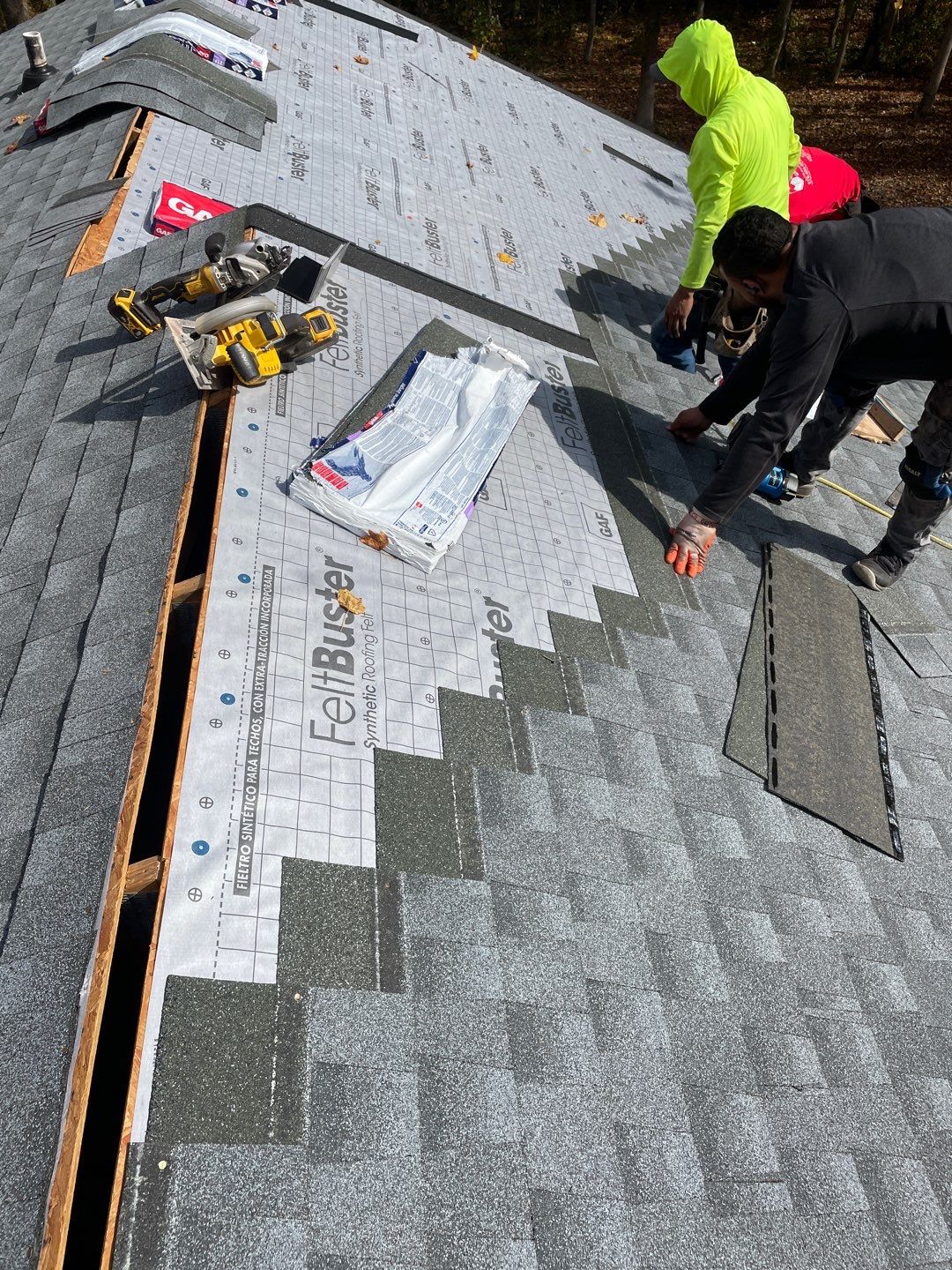Just How Gainesville Roofing Companies Can Change Your Home's Outside
Best Practices for Ensuring Appropriate Roofing Air Flow
A balanced consumption and exhaust vent ratio, generally 1:300, plays a pivotal function, with consumption vents ideally put at the lower edge of the roof covering for amazing air access and exhaust vents at the top for cozy air leave. Keeping insulation away from vents is essential to protect against airflow limitation.
Understand Air Flow Essentials
Properly understanding air flow fundamentals is crucial for guaranteeing the durability and performance of roof. Effective air flow alleviates wetness buildup and temperature extremes in the attic, both of which can result in substantial structural damage gradually. A well-ventilated roof covering assists in stopping common concerns such as mold and mildew growth, wood rot, and ice dams, which can compromise the integrity of the roof covering products and the underlying frameworks.
The main objective of ventilation is to facilitate the activity of air, permitting a constant exchange between the outside and interior atmospheres. This balance is achieved with a combination of intake and exhaust vents that function together to keep optimum air movement. Intake vents, normally located along the soffits or eaves, enable fresh air to enter the attic space, while exhaust vents, frequently situated at or near the roofing ridge, allow hot, humid air to get away.
Secret factors affecting the effectiveness of roof air flow consist of correct positioning, adequate sizing, and making certain that both intake and exhaust vents are unobstructed. Routine inspection and upkeep are crucial to determine potential blockages, damage, or inefficiencies in the air flow system, thereby protecting the roof covering's efficiency and sturdiness.
Kinds of Roof Covering Vents
Roof covering vents play a crucial function in preserving reliable attic room air flow and, by extension, the total health of the roof. Various sorts of roof vents are available, each with special benefits tailored to specific roof needs. Ridge vents, as an example, are set up along the roof's peak, enabling warm, damp air to escape from the attic room. They use continuous ventilation and mix flawlessly with the roofline, making them both reliable and aesthetically pleasing.

Soffit vents are set up under the eaves and job in tandem with roofing vents to guarantee a well balanced intake and exhaust system. By permitting cooler air to enter from below, soffit vents promote the expulsion of hot air via upper vents. Gable vents, situated on the outside walls of the attic room, offer one more efficient remedy, especially in homes with gable roofing systems.
Examine Your Existing Air Flow

Following, take into consideration the age and condition of your roof products and air flow parts. Older systems may not follow existing building ordinance or may have worn away with time, lowering their effectiveness. Conduct a thorough assessment to identify any kind of indicators of wear and tear, such as corrosion, damage, or voids that might jeopardize the system's efficiency.
Additionally, gauge the attic temperature level and moisture levels. High temperatures and humidity can indicate insufficient air flow.
Installment Best Practices
Efficient installment of roofing ventilation systems is paramount for ensuring optimal performance and durability. Appropriate installment begins with understanding the certain ventilation needs of the structure and the roof covering it covers. This includes determining the appropriate ratio of intake to exhaust vents, normally sticking to the 1:300 rule, which states one square foot of air flow for every 300 square feet of attic floor room.

Intake vents ought to be installed at the roof covering's lower side, commonly in the soffits, to allow awesome air to enter. Exhaust vents, on the various other hand, should be set up near or at the roofing's optimal to promote the exit of cozy, wet air.
Seal all vent links meticulously to avoid air leaks and possible water seepage. Usage premium materials and follow maker standards to ensure sturdiness and effectiveness. In addition, incorporating ridge vents with baffles can substantially enhance air movement effectiveness by stopping wind-driven rain and snow from entering the attic room.
Inevitably, precise installment of roofing air flow systems minimizes possible concerns such as mold and mildew growth, ice dig this dams, and architectural damage, making sure Continued the roofing's stability and the structure's general health and wellness.
Regular Maintenance Tips
Uniformity in maintenance practices is essential to ensuring the long-term effectiveness of roofing air flow systems. Throughout these assessments, make certain that vents are cost-free of particles, nests, and other obstructions that might impede airflow.
Use a soft brush or a vacuum to eliminate dust and particles from intake and exhaust vents. Be cautious not to damage the vent displays or louvers during the process.
Appropriate insulation is just as crucial. Make certain that attic room insulation does not block the vents, as this can severely restrict air flow. If any insulation has changed or resolved, rearrange or replace it to keep an effective obstacle.
Last but not least, change any damaged or missing out on parts immediately. Broken vents, fractured tiles, or worn-out flashing can all add to inadequate air flow and must be resolved right away. Routine maintenance ensures that the roof air flow system operates optimally, thereby extending the life-span of the roof itself.
Verdict
Guaranteeing appropriate roof ventilation is paramount for preserving the efficiency and sturdiness of a roofing system. Adherence to the 1:300 consumption and exhaust vent proportion, coupled with the calculated placement of vents, is crucial.
A well balanced consumption and exhaust vent proportion, frequently 1:300, plays a crucial function, with intake vents preferably placed at the reduced side of the roofing system for awesome air entrance and exhaust vents at the height for warm air leave. Consumption vents, generally located along the soffits or eaves, enable fresh air to get in the attic room room, while exhaust vents, typically situated at or click this site near the roofing system ridge, allow warm, damp air to run away.
Soffit vents are set up under the eaves and job in tandem with roofing vents to ensure a well balanced intake and exhaust system. By permitting cooler air to get in from below, soffit vents help with the expulsion of warm air with top vents. Adherence to the 1:300 consumption and exhaust vent ratio, paired with the strategic placement of vents, is important.